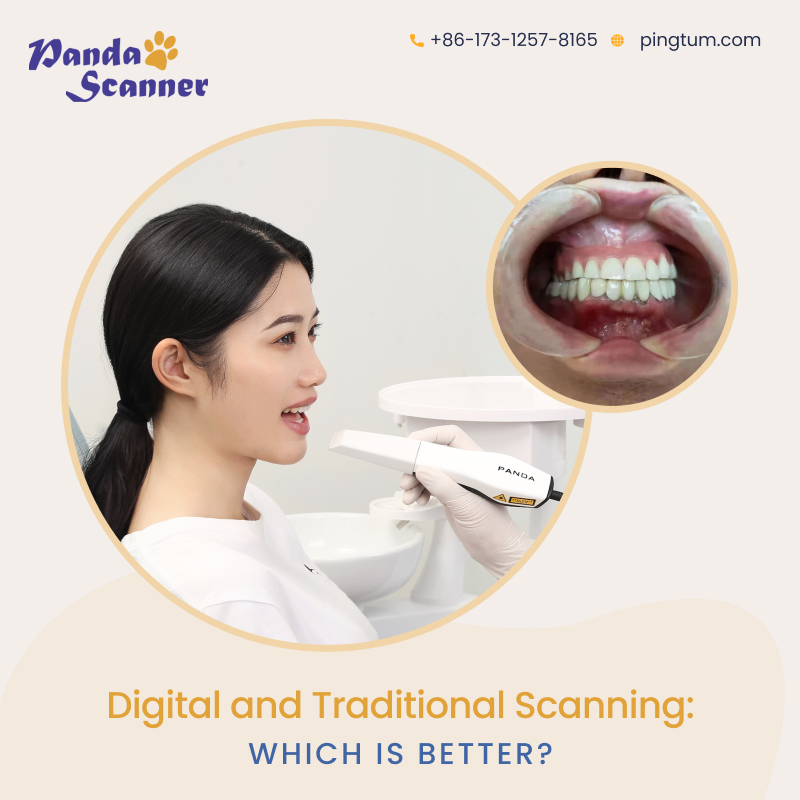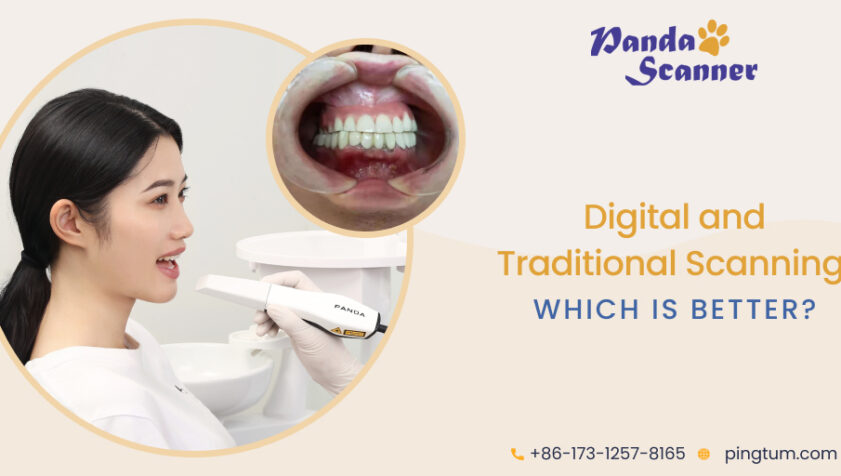As days are passing many new technologies and techniques are emerging in the dental world, helping the treatments to improve and get better. Among these technologies, dental scanning is a technology that has been well received in the market due to the many benefits it offers. While you may be aware of how the digital impression system has made the treatment simple, it is also important for you to know whether it is effective and worthwhile. And, more importantly, whether it is more beneficial than the conventional scanning method. To evaluate the same, you need to understand the differences between the two, and only then you will be able to understand which one serves you the best.
So, let’s take a look at the two scanning methods in this blog.
Conventional Scanning Method
The conventional or traditional scanning method follows a complicated procedure. The process is not only lengthy but also, can put patients to risk. This is because the patients who undergo the traditional scanning method are required to hold alginate materials that are unpleasant to taste in their mouth for a long time. This way the impression of their oral cavity is obtained. Although this process does not involve a needle, the unpleasant material can put the patient at risk of choking and gagging. Further, patients who have strong gag reflexes and issues like TMJ can find the process very inconvenient, and painful. In this process, the scope of committing errors isalso more, and therefore, a patient may have to go through the same process over and over again just to give the right impression. Thus, it is a time-consuming, error-prone, inconvenient scanning method.

Digital Scanning Method
Now, the digital scanning method or digital impression system uses intraoral scanners to obtain the impression of a patient’s mouth. And, eliminates the need for a wax-up model or the alginate materials used in the traditional scanning method. Here, the dentist captures the images of the patient’s buccal cavity with the help of digital scanners such as the China intraoral scanners. Thereafter, a 3D digital mode of the same is fabricated. These scanners unlike the traditional method, allow the patients to observe the procedure from the side monitor, and they can relax during the entire process. The procedure is non-invasive so the patients have no risk of choking or gagging or even feeling uncomfortable. The dental practitioner after obtaining the impression sends it to the laboratory virtually, where the crown, dentures or other restorative solutions are made. To help you understand how this scanning system is more convenient and useful here we have mentioned some more points.
Know why should you consider the digital scanning method over the traditional method of scanning.
- Perfect impressions can be obtained as the scanners can scan every nook and corner of the patient’s oral cavity, which is not possible with the traditional scanning method.
- Minimises the time required for scanning
- Eliminates the use of alginate materials that can cause choking and gagging in patients. Therefore, it is safe.
- Patients can relax during the scanning process
- Patients can observe the entire scanning process from their side monitor, which is not possible with the traditional scanning method
- Diagnostic errors are minimized
- The virtual storage option allows to free up spaces, whereas in the traditional method dentists and laboratories have to store the impression materials. Thus, the cost is reduced.
- The digital method has done away with the need for disposable trays that may trigger pollution as they end up in landfills as waste materials.
Conclusion
A digital impression system has many benefits to offer in contrast to the traditional scanning method. Further, dentists and patients both can have a great time during the treatment. Thus, many dentists are fast investing in advanced scanners like China’s intraoral scanners and embracing the digital impression system. If you are a dentist who wants to boost patients’ footfalls in your clinic, it is high time that you invest in such scanners.






